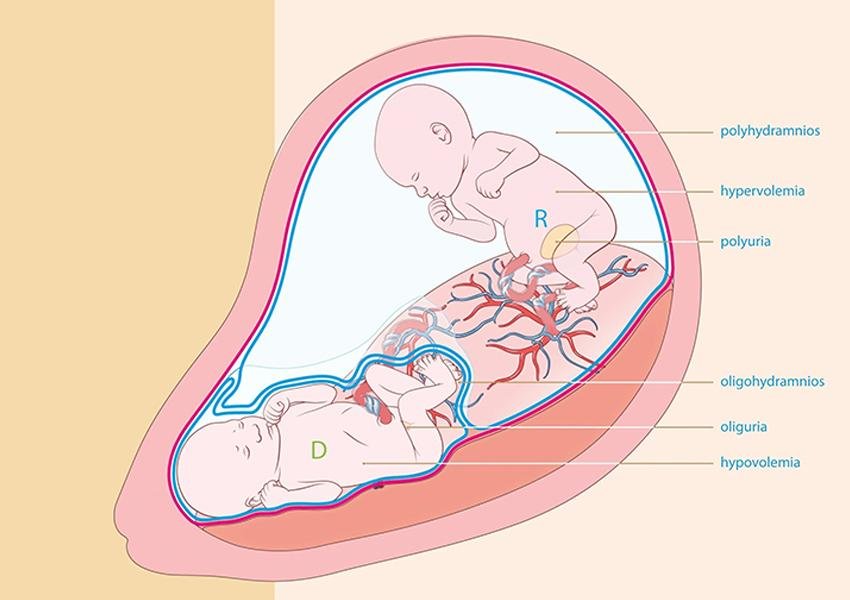Monochorionic twins (Identical twins)
Although all types of twins have above risks, some complications are unique to twins that share their placenta which are called Monochorioic twins (identical twins). They are the following:
Conjoint twins- Here the two twins are fused in the midline. This condition can be diagnosed by Ultrasound scan as early as 9th week of pregnancy.
Twin reverse arterial perfusion (TRAP) sequence- In this rare anomaly where one of the twins is incompletely developed and acts as a parasite. The heart is always missing. Can be diagnosed by Ultrasound scan as early as 1st trimester scan or the NT scan.
Twin-to-twin transfusion syndrome (TTTS)- Twin-Twin Transfusion syndrome is a unique complication of monochorionic twin pregnancy where blood from one twin called the donor twin is transfused to the other twin (called the recipient twin) through communicating channels called arterio-venous connections.
This may lead to decreased blood volume in the donor twin leading to decreased urine production, decreased water around the baby, abnormal blood supply to the baby, hydropic changes or even death. In the recipient twin, there can be overload of blood leading to increased urine production, increased water around the baby, heart failure and sometimes even death. Approximately 15% of monochorionic pregnancies can develop TTTS.
Selective IUGR (s-IUGR) Defined in cases where one of the twins has a growth less than 10th centile.
TTTS and s-IUGR can be diagnosed by ultrasound scan. The scan is performed from 16 weeks on wards at 2-weekly intervals to monitor monochorionic pregnancies. Timely identification of these problems helps in early intervention and good outcomes for the pregnancy. Interventions are namely - Laser photocoagulation, Cord coagulation, Radiofrequency ablation.

